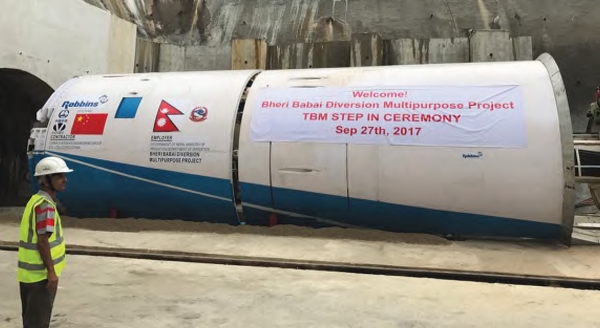Over recent decades, Nepal has been faced with an increasing need for underground engineering and construction expertise. In addition to the need for improved transportation services across the country, water shortages in several regions, due to longer dry winter seasons, have sparked several major hydro tunnelling projects.
To meet growing demands for hydro power, irrigation and water consumption in the east of the country, for example, the 12km long Bheri Babai tunnel under construction will deliver water from the Bheri River valley into the Babai basin.
In the Kathmandu area, the Malamchi water supply project comprises three tunnels, to keep pace with the water supply demand in the Kathmandu area.
As mentioned in a Tunneltalk article dated 22nd November, the ITA-CET Committee and ITACET Foundation have been working with the Nepal Tunnelling Association (NTA) to help train young civil engineers in Nepal keen to develop knowledge in tunnelling, and hydropower tunnelling in particular.
Back in 2013, with the above-mentioned projects in the pipeline, the NTA called upon ITA-CET to provide a training session on "Site Investigation, Design and Construction of Hydro and Transport Tunnels". Now, with construction of the Bheri Babai tunnel at around 70% completion, other training issues are arising, notably how to operate and maintain such tunnels.
For this reason, the ITA-CET Committee has been working with the NTA to draw up the programme for a one-day training session on the "Operation and Maintenance of Hydro tunnels". This event will take place in Kathmandu on 13th December 2018 (see the ITACET Foundation web site for more details).
It is clear that hydro tunnelling will remain high on the agenda in Nepal over the next few years and consequently so will the need to train engineers.
Photo courtesy of the Nepal Tunnelling Association.


